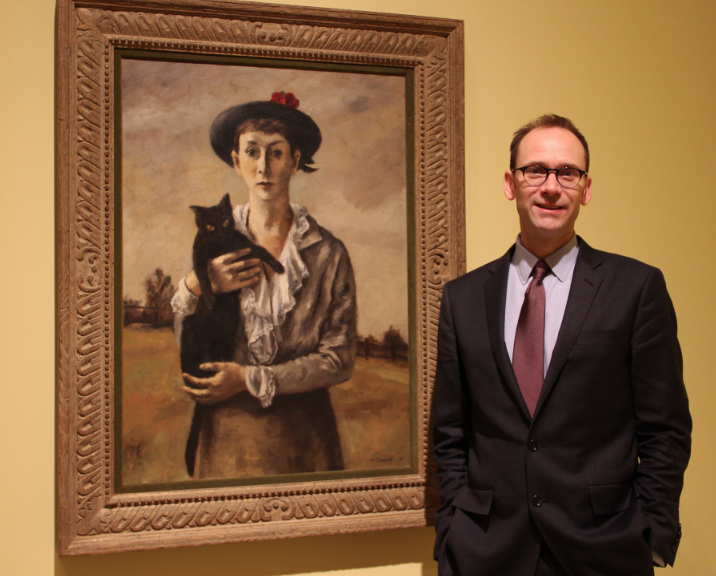
A loft apartment in the bad side of town. No heat in the winter, no air conditioning in the summer. Restless nights. Living off nothing more than cans of soup and dreams of becoming the next Dalí or Picasso.
That is the life of a starving artist — or is it?
A new exhibition opening today at the Sheldon Museum of Art aims to challenge people to rethink their image of the quintessential starving artist.
“It’s a very romanticized idea,” said Brandon Ruud, curator of transnational American art. “Yes, there is the artist. But there is also the person who wove the canvas, the person who mixed the paint, the person who made the paintbrushes, the person who framed the final product and so forth — it’s a very complex network.”
The exhibition, “Partners and Adversaries,” showcases the intricate connections between artists by exploring the productive, yet sometimes tumultuous relationships that stem from artistic collaborations.
“This is a project that’s been formulating in the back of my mind for several years based on a book I read called ‘Art Worlds’ (by Howard S. Becker) that attempts to show what lies beyond the singular artist,” Ruud said.
Traditionally, the term “art world” denotes a lone artist, often working in solitude to create his or her art with the hopes that it will someday be recognized as a masterpiece.
“(This exhibition) is complicated, because you want to show the artwork and not necessarily create a book on the gallery walls that explains every little thing,” Ruud said. “You want people to appreciate the artwork for how it is.”
To remedy the problem of displaying an exhibition based on intangible relationships, Ruud turned to themes as a way to streamline the selected artworks.
One theme, “Students and Teachers,” dissects the manner in which protégés are born and how students absorb the lessons taught by more experienced artists.
“That section focuses on Robert Henri, an important artist in Sheldon’s collection and perhaps the most influential teacher in the first half of the twentieth century,” Ruud said. “It highlights his work alongside some of the students he taught and how they learned about attention to detail and realism in an impressionist vein.”
The exhibition also sheds lights on how familial and romantic relationships affect artists and their work.
“Whether it’s husband and wife or son and father — how do they influence one another?” Ruud said.
One relationship that “Partners and Adversaries” examines more closely is that of painter and printmaker Jasper John with fellow artist Robert Rauschenberg. For nearly a decade, the two were professional and romantic partners.
“On the surface, you want to say their works are so alike because they were artistic partners and romantically involved,” Ruud said. “But in many cases, they’re completely different in both concept and approach and in the finished result.”
“Partners and Adversaries” will open alongside “All is Pretty,” an exhibition of Polaroid photographs by Andy Warhol.
Mostly taken throughout the 1970s, the images offer a peek into some of Warhol’s more private moments at his apartment and studio, along with his impressions of daily street life.
“He referred to the Polaroid as a kind of diary of his existence from day to day,” Ruud said. “He would record whatever he saw as a souvenir or memento.”
Warhol, who theorized that in the future everyone would be famous for 15 minutes, used the Polaroid as an unconventional tool to capture his own fame-drenched persona.
“It’s kind of a metaphor for Warhol himself, who on one hand was intensely private, but who had this very public façade about him,” Ruud said. “He was influenced and enamored by the culture of celebrity.”
The exhibition’s title is intended to pay homage to Warhol, who built his career on beautifying the seemingly mundane.
“Whether it’s one of his Campbell’s cans of soup or one of his Brillo boxes, he believed that in the art world, all things can be pretty.”
— Mekita Rivas, University Communications